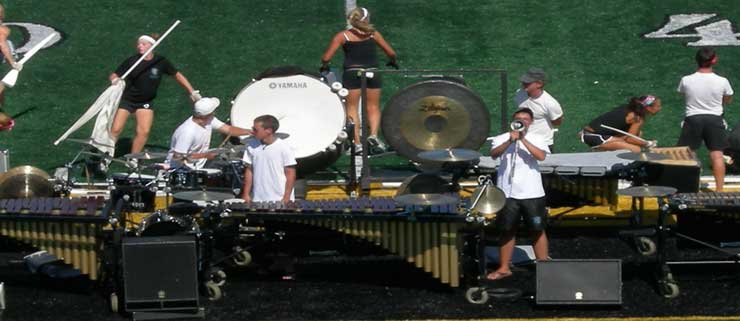.jpg) A new research paper in the September 22nd, 2010 Journal of Neuroscience titled Enhancing Perceptual Learning by Combining Practice with Periods of Additional Sensory Stimulation points to something that many music educators have believed for a long time yet few actually push as a part of their student’s practice routines. The main point of the study appears to be that exposing a learner to additional auditory stimulation while attempting to learn an auditory task has a compounding effect on how much and how quickly the learner improves in completing the task. In other words, if a student practices their trombone for twenty minutes and then listens to twenty minutes of a good trombone performance he or she will reap the benefits of the equivalent of forty minutes of pure practice time.
A new research paper in the September 22nd, 2010 Journal of Neuroscience titled Enhancing Perceptual Learning by Combining Practice with Periods of Additional Sensory Stimulation points to something that many music educators have believed for a long time yet few actually push as a part of their student’s practice routines. The main point of the study appears to be that exposing a learner to additional auditory stimulation while attempting to learn an auditory task has a compounding effect on how much and how quickly the learner improves in completing the task. In other words, if a student practices their trombone for twenty minutes and then listens to twenty minutes of a good trombone performance he or she will reap the benefits of the equivalent of forty minutes of pure practice time.
This article touches not only on what this research means for us as music educators but also provides several useful options for teachers to incorporate these listening activities back into the curriculum.
So what does this mean for us as teachers? It means that those forward thinking teachers who have been buying iPods and loading them with music then loaning them out to students as a required part of their instrumental or vocal classes have had the right idea all these years. In fact, it appears to me that this idea should probably be expanded and made even more pervasive, being used in every performing music classroom, and that adding a listening component to regular practice assignments should become part of the routine.
We have always known that in order to be a good player a student has to know what good players should sound like yet how many of us have pushed students to do active listening assignments outside of a large group ensemble rehearsal? At the same time we constantly beg and plead with our students to practice every night yet very few students do anywhere close to the amount of practice that we ask for. Maybe it is time to break the mold of what it means to practice as a beginner and add some flavor to the routine?
Consider a situation where a beginning flutist goes home with an assignment to practice for two hours during the coming week. The student goes home, practices once or twice, usually has no way to tell if they are doing good or not, and stops well short of the weekly practice requirement. Now instead imagine a student being asked to practice at least an hour plus listen to an equal amount of flute recordings on a loaned CD. The research suggests that having her do so will provide the equivalent of two hours of progress and will likely also be more received more positively by the student as well (perhaps encouraging even more practice down the road). By listening to a good player she will be more likely to know what a good flute sound is and in turn be better able to self-critique her practice sessions. Sounds like a win-win situation to me!
Now we should obviously be realistic about this research. As Jonah Lehrer mentions in his critique of the study on Wired:
This doesn’t mean, of course, that we can just play Yo Yo Ma in the background and expect to master the cello, or put the textbook underneath the pillow and expect to ace the algebra test. We still need to practice. We just might not need to practice as much as we think.
Still, I am willing to do just about anything to help my students grow as musicians and to improve in their performance abilities. If listening is as important as the research says it is then why the heck don’t we do more of it?
Why Don’t Teachers Require More Listening?
No one can deny the benefits of using listening projects in our instrumental and vocal education classes but the big question is, why the heck are teachers not doing it? Perhaps the answer is that even in our era of constant information access many teachers feel that they still do not have an easy and quick way to allow students access to the music that they need to listen to. Finding and compiling the desired listening tracks is one obstacle but beyond that also lies the legalities of making copies of the songs, burning them to CD or MP3 player, distributing them, and getting them back. Simply claiming fair educational use is no longer an acceptable excuse. To do things legally and ethically a teacher often has to jump through a number of technical and monetary hurdles, but there are easier ways to accomplish the same final goal. Read on to find out some suggested ideas of how to make listening work in your classroom.







 Scroll down to view the comparison chart of over a dozen different portable digital audio recorders.
Scroll down to view the comparison chart of over a dozen different portable digital audio recorders.